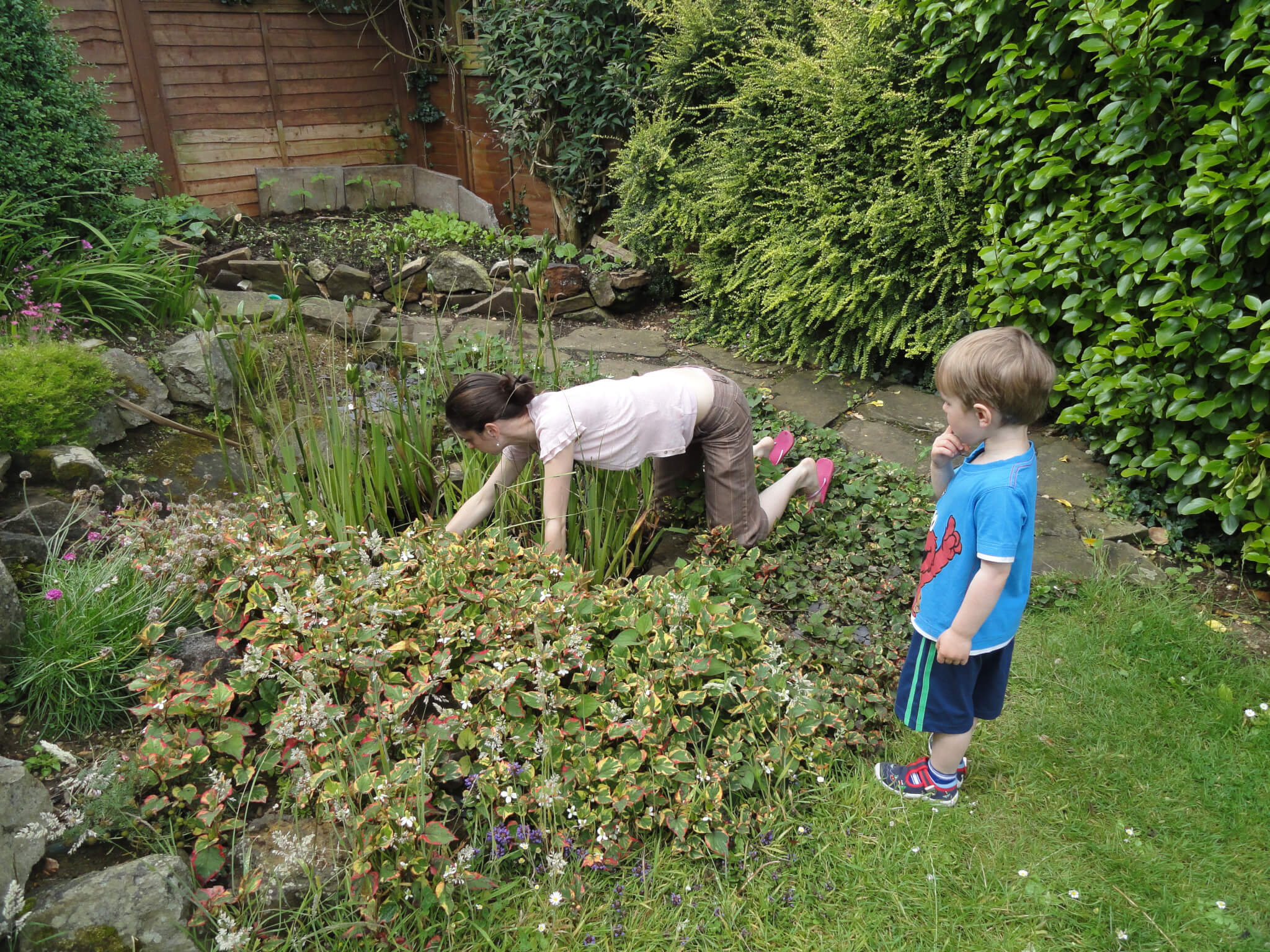 When purchasing our new home, my husband and I had mixed feelings regarding the pond. It’s petite, measuring less than a metre in diameter; however our concerns were more significant in size. With two young children we were worried about the risk of drowning. My father had already filled in his large pond and although I share his concern I was reluctant to destroy this precious habitat. A body of water, no matter how small, is one of the best ways to support wildlife in the garden. As our pond is overgrown with iris roots it’s barely 2 inches deep and is surrounded with plants to deter children from venturing too close. Thus, it was permitted to remain intact. Obviously it remains a hazard, so youngsters are warned of the dangers and monitored around the water.
When purchasing our new home, my husband and I had mixed feelings regarding the pond. It’s petite, measuring less than a metre in diameter; however our concerns were more significant in size. With two young children we were worried about the risk of drowning. My father had already filled in his large pond and although I share his concern I was reluctant to destroy this precious habitat. A body of water, no matter how small, is one of the best ways to support wildlife in the garden. As our pond is overgrown with iris roots it’s barely 2 inches deep and is surrounded with plants to deter children from venturing too close. Thus, it was permitted to remain intact. Obviously it remains a hazard, so youngsters are warned of the dangers and monitored around the water.
I had little idea how valuable this small pool would prove to be until one spring morning when my eye was drawn to something twinkling in it. Closer inspection revealed that during the night an amphibious visitor had gifted us a batch of frogspawn. I was so excited I almost fell in trying to get a better view.
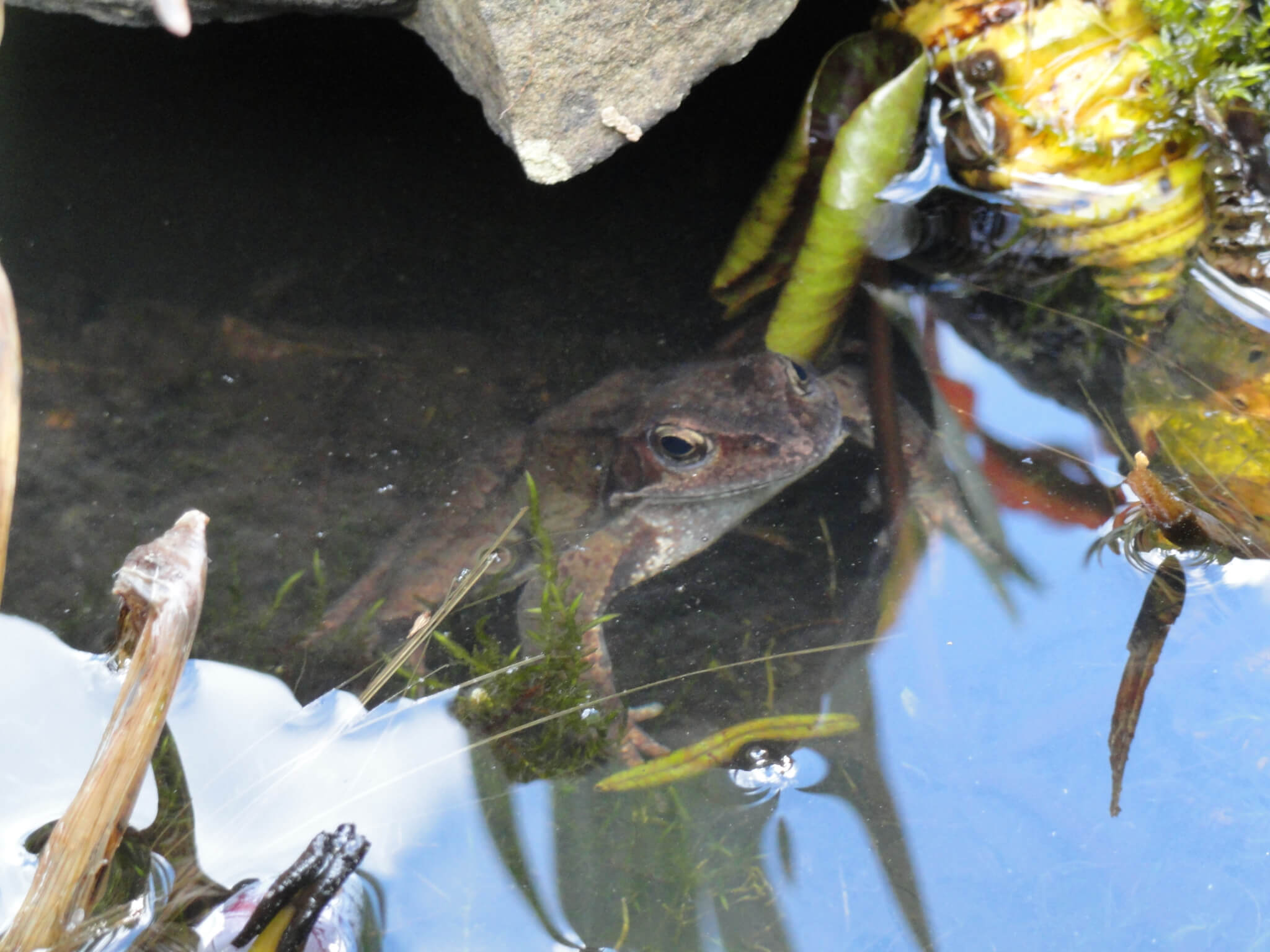
I called over my toddler who, whilst thrilled, seemed a little perplexed. As a biologist I’m fascinated by the creation of life and thus got a little carried away describing, in detail, the frog life cycle. Clearly this was too much for a two year old to comprehend but after some simplification we classified the new arrivals as ‘baby frog’s eggs’. The most baffling part was how the frogspawn had found its way into our pond since we’ve never seen a frog nearby. We clearly hadn’t looked closely enough. Careful removal of a few rocks revealed a beautiful adult specimen. I’m no expert so was unable to determine its’ sex but it I’d like to think it was the female who laid the batch, keeping watch over her brood.
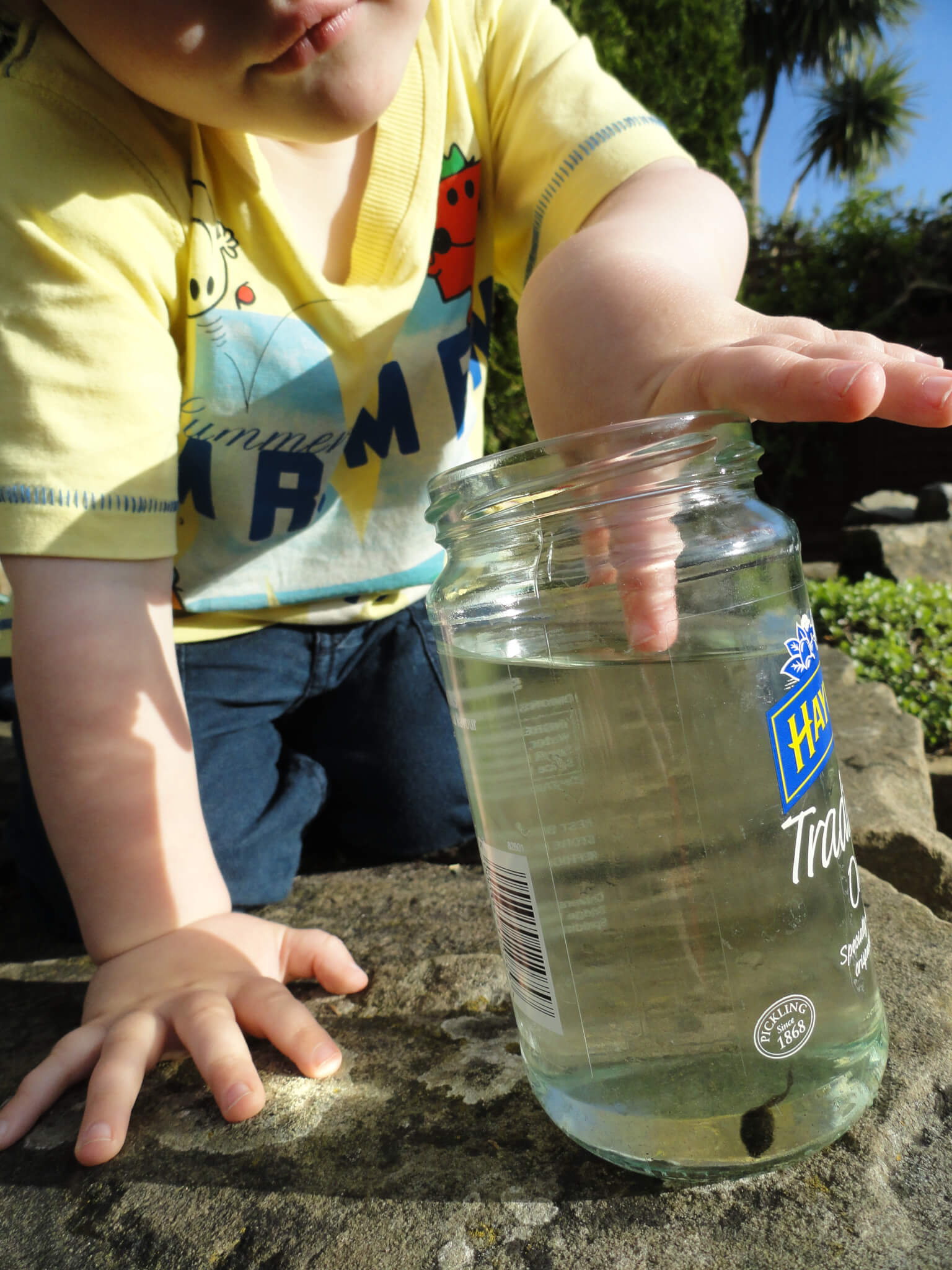
Keen to use this exciting development as a learning opportunity, we spent the afternoon reading every frog-related book in the house and downloading illustrations of their life cycle. Since then we’ve monitored our ‘babies’ regularly, observing the changes, drawing them and discussing their development. We took care to ensure the pond did not dry out during this critical period, topping it up regularly from our water butt. It was wonderful to witness the minute black specks growing larger and taking on the characteristic tadpole form before finally hatching out. Once this significant step had been taken I could be found, almost daily, leaning precariously over the water, ‘fishing’ for tadpoles.
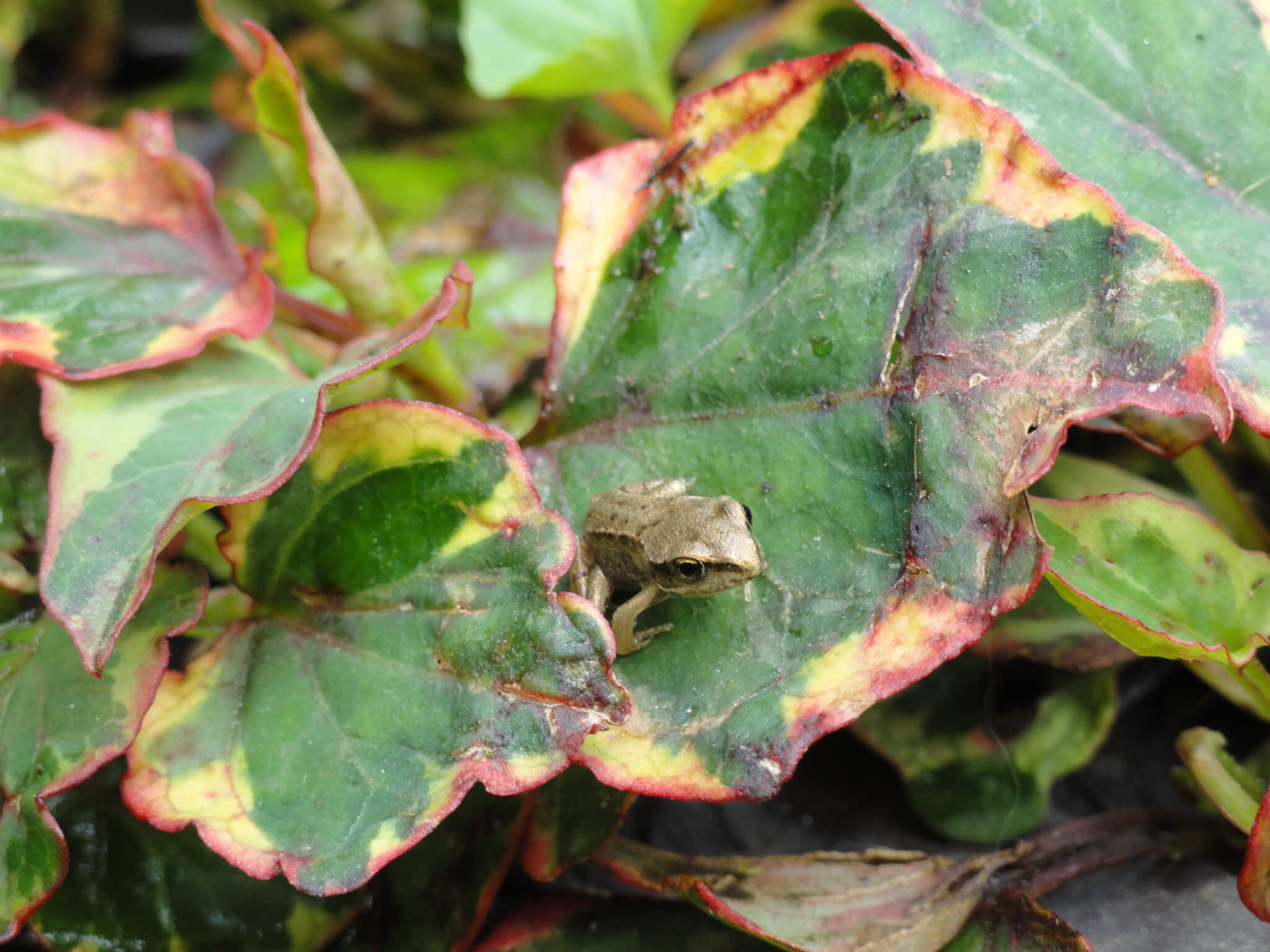
Containing the tadpoles briefly in a jamjar allowed us to observe their growth, progressively losing the tail and sprouting legs. Our weeks of surveillance came to fruition when one ‘fishing trip’ caught more than anticipated. I’m not sure who was more surprised when a miniscule froglet leapt from a lilypad into the pond! Gently scooping up the tiny but perfectly formed amphibian, I presented it to my children, whose faces lit up with delight.
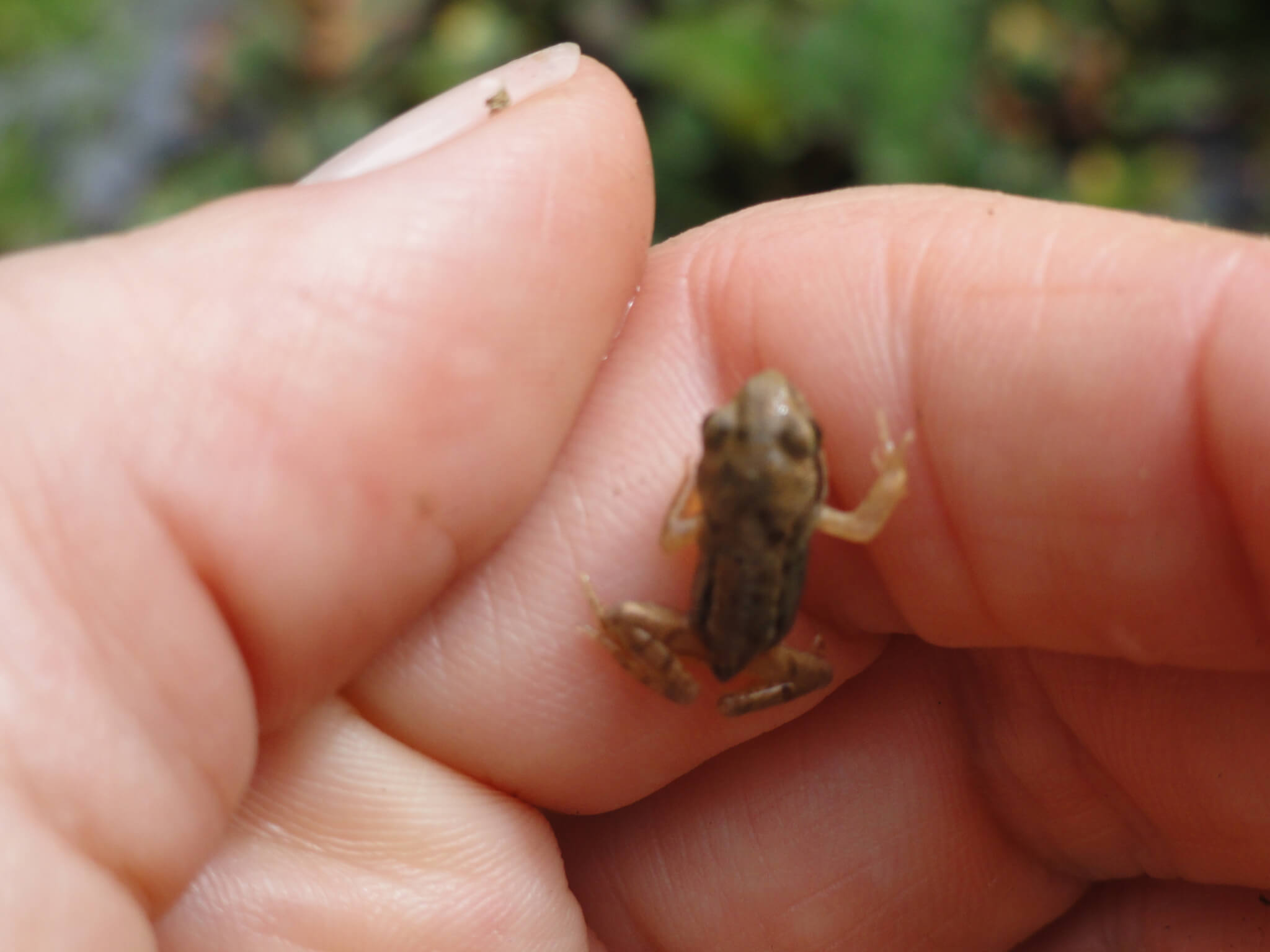
I’m amazed how many have survived adulthood in such a tiny pool. It’s proof that even a small body of water can attract and support wildlife in the garden. I’m delighted we took the decision to retain our pond as it’s proved beneficial not only to the resident amphibians, but also to my family, who’ve gained great pleasure and knowledge from it. We anticipate more exciting experiences next spring, as the circle of life continues, and hopefully our little froglets return to spawn the next generation.
– Charlotte